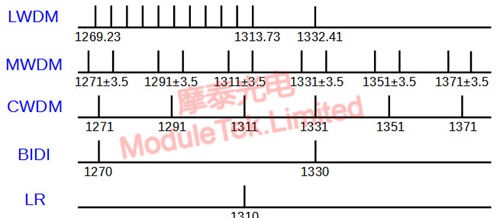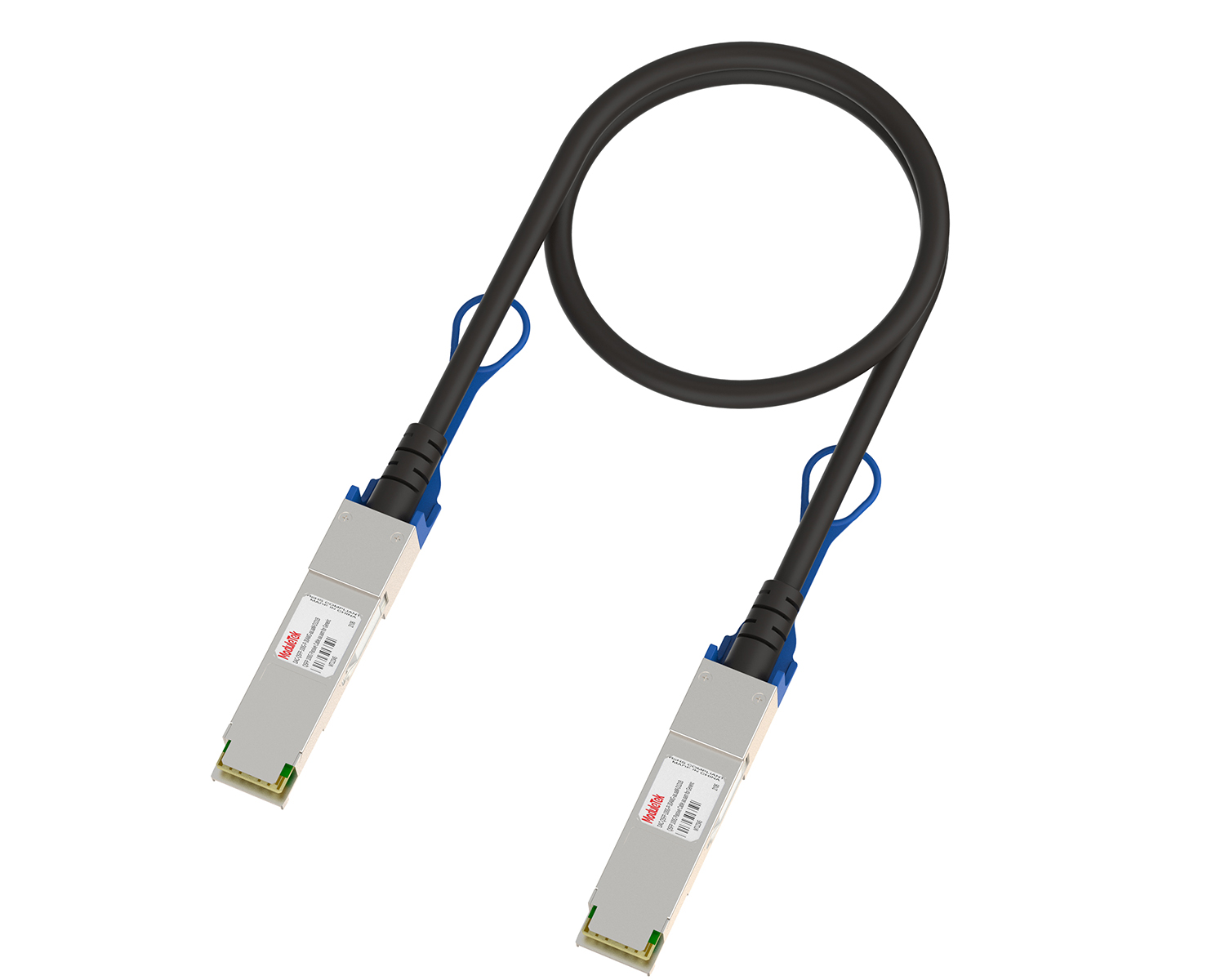Introduction of 25G-LWDM color optical module
Time: 2021-11-09
• In 25G applications, 12-wave colored optical modules have two relatively adopted by operators to achieve the scheme
MWDM, this scheme is derived from 6-wave CWDM, which is realized by offsetting ±3.5nm on the basis of each central wavelength of CWDM 1270-1370nm respectively. The disadvantage of this scheme is that the 4-wave dispersion near the two wavelengths of 1350nm and 1370nm is large, so the solution given by MWDM is to receive the first 8 wavelengths with PIN and the next 4 wavelengths with APD to make up for the power cost due to dispersion.
LWDM, this solution is derived from 100G and 400G CWDM and Lan-WDM, which makes full use of the optical communication industry chain reuse, and defines 12 LWDM wavelengths with small dispersion and high cost performance.
Table 1 Comparison of wavelength characteristics of 25G-LWDM and MWDM
-
Number of wavelengths
Product type
Minimum wavelength spacing
12
LWDM
4.5nm
12
MWDM
7nm
• Wavelength Distribution of 25G-LWDM Color Optical Modules
The following figure shows the wavelength distribution of 25G common optical modules, which can visualize the wavelength selection and characteristics of various modules.

Figure 1 Wavelength distribution of 25G common optical modules
The 12 channel wavelengths of 25G-LWDM products are defined as follows:
Channel 0: Wavelength 1332.41nm, reusing the DML-1330 wavelength from the 100G CWDM application. Note that it does not have the same wavelength spacing as the other wavelengths, and belongs to a wavelength specially selected for the purpose of reusing the chain;
Channel 1: Wavelength 1313.73nm, reusing the DML-1310 wavelength from the 100G CWDM application. Starting from this wavelength, the channel spacing of the wavelengths are all about 4.5nm;
Channel 2: wavelength 1309.14nm, reusing the DML wavelength from the 100G LanWDM application;
Channel 3: wavelength 1304.58nm, reusing the DML wavelength from the 100G LanWDM application;
Channel 4: wavelength 1300.05nm, reusing the DML wavelength for 100G LanWDM applications;
Channel 5: wavelength 1295.56nm, reusing the DML wavelength for 100G LanWDM applications;
Channel 6: wavelength 1291.10nm, reusing the DML-1290 wavelength for 100G CWDM applications;
Channel 7: wavelength 1286.66nm, reusing the EML wavelength from a 400G LanWDM application;
Channel 8: wavelength 1282.26nm, reusing the EML wavelength from the 400G LanWDM application;
Channel 9: wavelength 1277.89nm, reusing the EML wavelength for 400G LanWDM applications;
Channel 10: wavelength 1273.54nm, reusing the EML wavelength for 400G LanWDM applications;
Channel 11: 1269.23nm, reusing the DML-1270 wavelength for 100G CWDM applications.
The outstanding feature of 25G-LWDM products in wavelength selection is to avoid wavelength bands with large dispersion, make full use of established mature wavelengths for optical communication, and reuse the industry chain to enhance the price-performance ratio.
Moduletek Limited provides the products involved in the above application guide, welcome to buy.
If you have any questions about the above content, you can contact us by Email : web@moduletek.com

 40G/100G Optical Transceivers
40G/100G Optical Transceivers 10G/25G Optical Transceivers
10G/25G Optical Transceivers 155M/622M/2.5G Optical Transceivers
155M/622M/2.5G Optical Transceivers 100M/1G Optical Transceivers
100M/1G Optical Transceivers FC 16G/32G Optical Transceivers
FC 16G/32G Optical Transceivers CWDM/DWDM Optical Transceivers
CWDM/DWDM Optical Transceivers 100M/1G/10G Coppers
100M/1G/10G Coppers Active Cable AOC
Active Cable AOC Direct Attach Cable DAC
Direct Attach Cable DAC Regular/MTP-MPO Fiber Patch Cords
Regular/MTP-MPO Fiber Patch Cords MT2011
MT2011 MT2010
MT2010 CodingBox
CodingBox






